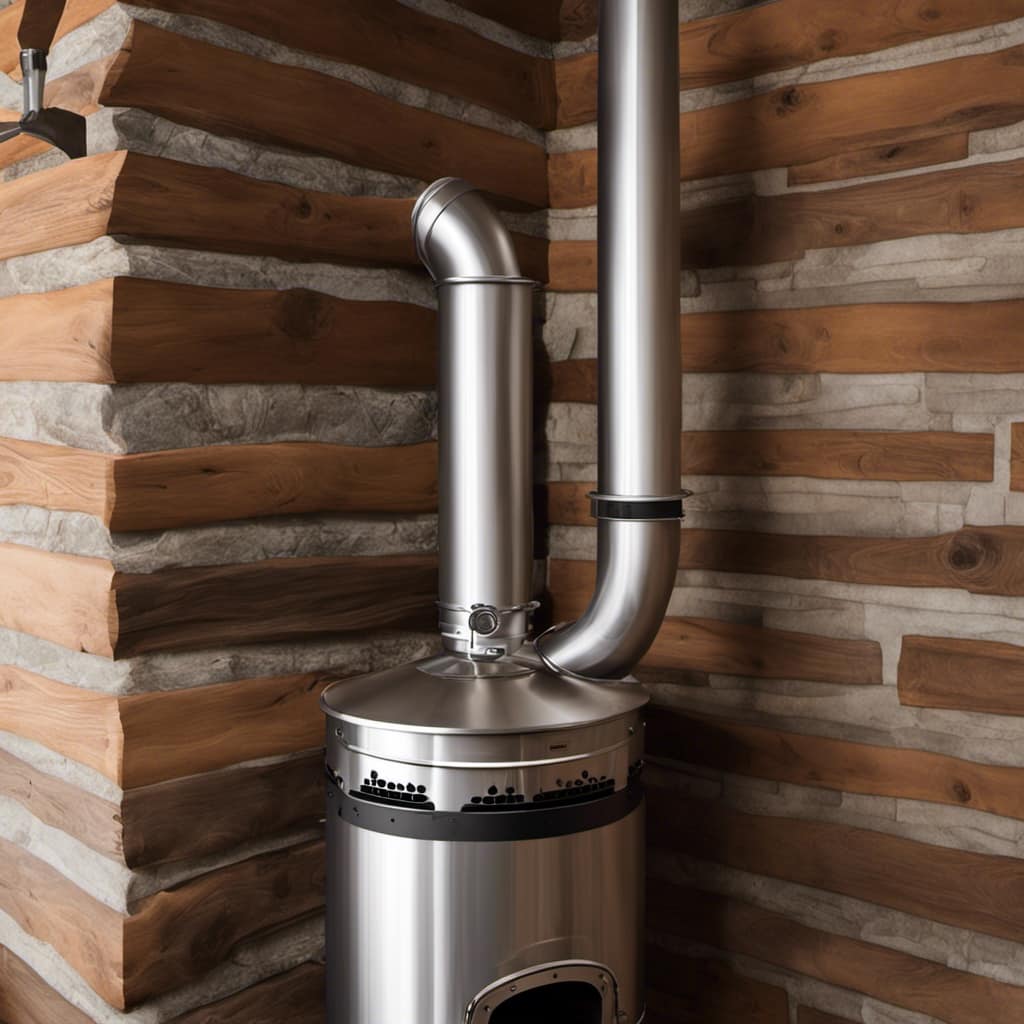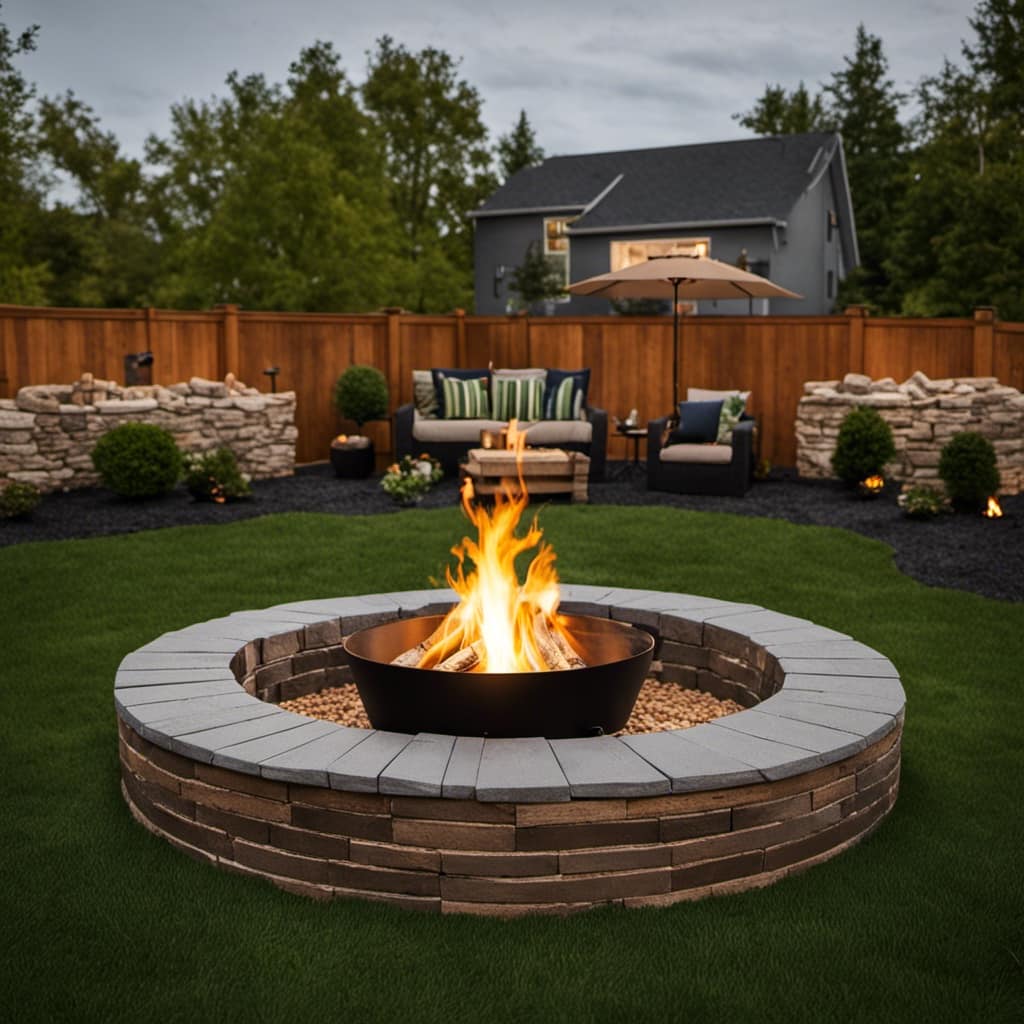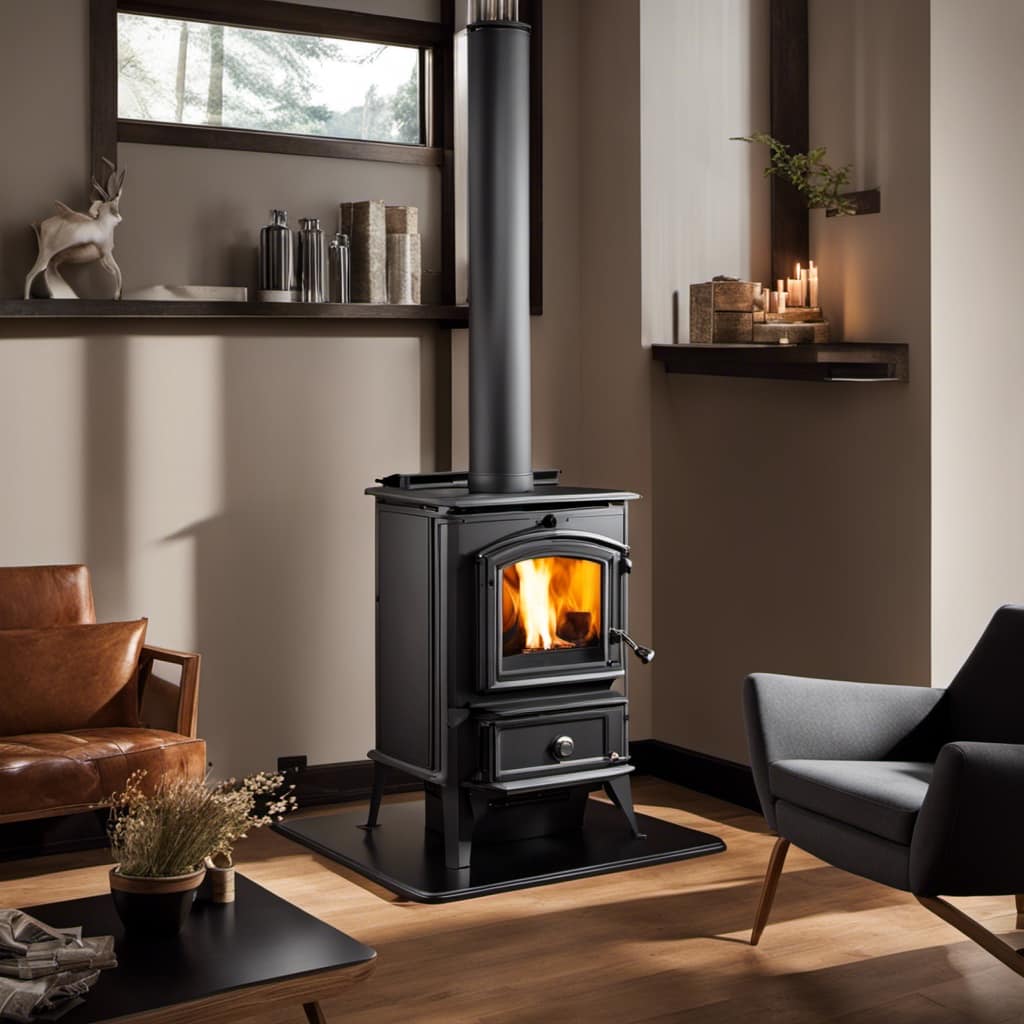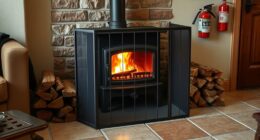I have always been intrigued by the mechanics of a damper in a wood stove.
It’s fascinating how a simple mechanism can control the airflow and heat output of a fire.
In this article, we’ll delve into the components and mechanisms of a wood stove damper, exploring its impact on the efficiency and performance of the stove.

Whether you’re a seasoned wood stove user or just curious about its inner workings, join me on this technical journey to uncover the secrets of a wood stove damper.
Key Takeaways
- A damper in a wood stove controls airflow and regulates fire intensity.
- Regular maintenance of the damper is important for proper functioning.
- Different types of dampers, such as manual and automatic, offer different functions and options for regulation.
- Adjusting the damper can impact heat output and efficiency by controlling the amount of oxygen entering the firebox.
The Purpose of a Damper in a Wood Stove
The purpose of a damper in a wood stove is to control the airflow and regulate the intensity of the fire. It plays a crucial role in maintaining a safe and efficient wood-burning experience. Regular maintenance of the damper is of utmost importance to ensure its proper functioning. Over time, soot and creosote can build up on the damper, obstructing airflow and reducing its effectiveness. Cleaning the damper regularly helps prevent blockages and allows for better control of the fire.
There are different types of dampers available for wood stoves, including manual dampers and automatic dampers. Manual dampers are controlled manually and require adjustment by the user, while automatic dampers use a thermostat to regulate the airflow automatically. Choosing the right type of damper depends on personal preference and the specific needs of the wood stove user.
Components and Mechanisms of a Wood Stove Damper
I can explain how the components and mechanisms of a damper regulate airflow in my wood stove. A wood stove damper is an essential part of the stove that controls the amount of air entering and exiting the firebox. It consists of various components, including a handle, a plate or flap, and a mechanism that allows for adjustment.

The purpose of the damper is to regulate the combustion process, ensuring efficient burning and heat output. There are different types of wood stove dampers, such as throat, baffle, and secondary air dampers. Each type has its own design and function, but they all work towards the same goal of controlling airflow.
Common problems with wood stove dampers include rusting, sticking, and improper adjustment. Regular maintenance and cleaning are necessary to keep the damper functioning properly.
| Component | Function |
|---|---|
| Handle | Allows for adjustment of the damper |
| Plate/Flap | Controls the airflow |
| Mechanism | Connects the handle to the plate/flap |
| Gasket | Creates a seal to prevent air leakage |
How a Damper Controls Airflow in a Wood Stove
By adjusting the handle, I can control the amount of air entering and exiting the firebox, ensuring efficient burning and heat output in my wood stove.
Proper ventilation is crucial for the safe and effective operation of a wood stove. Without adequate airflow, the fire may not burn efficiently, leading to incomplete combustion and the production of harmful gases like carbon monoxide.

A properly functioning damper plays a vital role in regulating the airflow. However, there are common problems that can occur with wood stove dampers, such as rusting, warping, or clogging due to soot buildup.

To troubleshoot these issues, it’s important to regularly inspect and clean the damper, ensuring that it moves freely and seals tightly. Additionally, adjusting the damper according to the manufacturer’s recommendations can optimize heat output and efficiency in the wood stove.
The Impact of a Damper on Heat Output and Efficiency
Adjusting the damper can significantly increase the heat output and efficiency of my wood stove. The position of the damper has a direct effect on the amount of wood consumed and the distribution of temperature within the stove.
When the damper is fully open, more oxygen is allowed into the stove, resulting in higher combustion rates and increased heat output. However, this also leads to faster wood consumption.
On the other hand, when the damper is partially closed, it restricts the airflow, resulting in slower combustion rates and reduced heat output. This can help conserve wood, but may lead to uneven temperature distribution within the stove.
Finding the right balance is crucial for optimizing heat output and efficiency.
Now, let’s explore some tips for properly using and maintaining a wood stove damper.
Tips for Properly Using and Maintaining a Wood Stove Damper
Properly maintaining the damper ensures optimal heat output and efficiency of my wood stove.
When it comes to using and maintaining a wood stove damper, there are a few key tips to keep in mind:
-
Common damper problems and troubleshooting: Familiarize yourself with common damper issues such as rust, debris buildup, and improper seal. Troubleshooting these problems will help maintain the damper’s functionality.
-
Cleaning and inspecting a wood stove damper: Regularly clean and inspect the damper to remove any creosote buildup or debris that may hinder its performance. Use a brush or vacuum to clean the damper thoroughly.
-
Proper operation: Know how to open and close the damper properly to control the airflow and heat output. Avoid leaving the damper fully open for extended periods to prevent excessive heat loss.
-
Professional maintenance: Consider having a professional inspect and service the damper annually to ensure it’s in good working condition and to address any potential issues.
Following these tips will help you maximize the efficiency and longevity of your wood stove damper.
Frequently Asked Questions
Can a Wood Stove Damper Be Installed on Any Type of Wood Stove?
Yes, a wood stove damper can be installed on most types of wood stoves. The installation process may vary depending on the specific stove model, but generally, dampers can be added to improve the stove’s efficiency and control the airflow.
How Often Should the Damper on a Wood Stove Be Inspected and Cleaned?
Inspect and clean the wood stove damper regularly to ensure proper functioning. Signs of a dirty damper include difficulty in controlling airflow and excessive smoke. Cleaning frequency depends on usage, but once a year is a good rule of thumb.
Is It Possible to Adjust the Damper to Control the Intensity of the Fire in a Wood Stove?
Yes, you can adjust the damper on a wood stove to control the intensity of the fire. By manipulating the damper, you can regulate the airflow and maintain the desired temperature inside the stove.
Can a Wood Stove Damper Help to Reduce Smoke and Odors in the Room?
A wood stove damper can help reduce smoke and odors in the room by controlling the airflow and combustion rate. By adjusting the damper, I can improve indoor air quality and create a more pleasant and efficient heating experience.
Are There Any Safety Precautions to Keep in Mind When Using a Wood Stove Damper?
Are there any safety precautions to keep in mind when using a wood stove damper? To operate a wood stove damper correctly, ensure proper ventilation, regularly clean and inspect the damper, and never leave the stove unattended while in use.
Conclusion
In conclusion, the wood stove damper is a crucial component that regulates airflow in order to control heat output and improve efficiency.
By understanding its purpose, components, and mechanisms, as well as properly using and maintaining it, one can ensure optimal performance of their wood stove.

So, don’t let your wood stove go ‘up in smoke’ – make sure you harness the power of the damper to keep your home warm and cozy all winter long.












